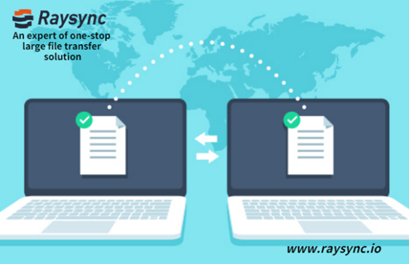Filter News

Raysync News
September 11, 2023Raysync Introduces High-speed Large File Transfer Platform Built on Red Hat Enterprise Linux Ecosystem
Raysync, a leading provider of high-performance file transfer solutions, has announced a strategic partnership with Red Hat, the world-renowned open-source software and solutions provider.
Raysync News
January 5, 2024What are the pros and cons of peer-to-peer transfer?
As a new method of data transfer, P2P transfer has its pros and cons, just like everything else. In this article, we will take the Raysync transfer tool as an example and introduce the advantages and disadvantages of using the P2P transfer tool in detail.

Raysync News
January 5, 2024How to Solve the Challenges of Modernizing Healthcare Data Transfer?
Facing major challenges in the healthcare sector, RaySync is empowering the modern and rapid development of data transfer in the healthcare industry.

Raysync News
January 4, 2024【2024】How to transfer large data stably and efficiently?
Secure and efficient large data transfer is a key factor for businesses to compete in the era of big data.

Raysync News
January 4, 2024[2024] The Complete Guide For File Sharing Software
This article mainly introduces file sharing software guidelines, which can help you avoid risks and minefields in the transfer of large files.

Raysync News
January 3, 2024[2024] How to Ensure the Safe Transmission of Large File Data?
How to ensure the safe transmission of large files is a difficult problem that we must solve today. Raysync has the advantages of transmission to make you safe and reliable when transferring files.

User Guide
December 26, 2023Raysync Advances Distribution Technology for the Film Industry
The one-stop solution adopts the completely self-developed RadiumSpeed high-speed transmission technology, which greatly improves the efficiency of film and television production and distribution.

Raysync News
December 26, 2023Why UDP transmissions lose packets and how to fix it.
UDP packet loss affects the quality and efficiency of transmission, causing data loss, delay, and even transmission failure. So, this article will analyze the reasons for UDP packet loss and the corresponding common solutions for reference.

Raysync News
December 22, 2023How to transfer medical data securely and efficiently?
As the volume of healthcare data grows, the transmission of healthcare data has become a major challenge for the healthcare industry. This article focuses on the knowledge of medical data transmission.

Raysync News
December 22, 2023What are the Requirements for Secure File Transfer 2024?
Secure file transfer is when files are transferred using a security protocol to secure that communication channel. This is incredibly important in corporate environments because organizations are regularly handling personal and sensitive data.

